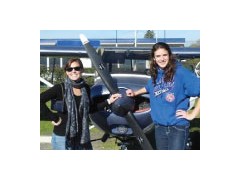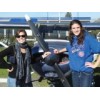We recommend that a student begin their flight training at approximately the same time they begin their ground studies, for optimal immersion, but one aspect of learning to fly doesn’t immediately require the other as a prerequisite.
Selecting an Instructor
Learning to fly is a one-on-one teacher-student relationship. Since everyone is different, it is extremely important to selec an instructor that you find easy to communicate with, and that you feel secure with, and who can accommodate to your learning needs. Most professional flight instructors know how to make this easy for you, but learning to fly with someone you dislike or distrust can be stressful and potentially unsuccessful. We will do our best to match you to an instructor, but if you are unsure, it is OK to contact several instructors personally, and talk with them, or ask for meetings. Another good way to try out a flight instructor is with an introductory flight. Introductory or sometimes called Discovery flights are a short, low-cost flight lesson wher you can see first hand what your instructor is like, as well as the aircraft.
Choosing a Flight School
Choosing a flight training school is just as important as choosing an instructor. Do you feel comfortable? Do you feel safe with the airplane(s) you will be flying? What is the schools’ procedure for aircraft maintenance? Are the costs of rentals and instruction competitive and fair? We encourage you to pay us a visit and tour the facility. Come meet the staff and other student pilots, and have a look at our aircraft.
How Long and How Much?
According to FAA regulations, a student pilot can earn his or her airmen’s certificate in as few as 40 hours of training. On average, it may take 60 to 80 hours (or longer) of flight training to be ready for a student to be fully prepared for their practical exam. The time spent on pilot’s training depends on multiple factors including the student’s learning and study capabilities, time allotted weekly for training, and other unforeseeable obstacles such as poor weather or health.
Plan Accordingly
The quickest and most effective schedule for flight training is to arrange for flight lessons at least twice, if not three times a week. Frequent flight lessons keeps a student focused on the topic of aviation, and helps prevent key elements of previous lessons being forgotten. A student who flies only once a week or less might be prone to forgetting some of what they learned previously, and if a lesson is disrupted or postponed due to weather or personal issues, it may be two weeks or more between lessons. It is this more spread out lesson plan that often prolongs completion.





